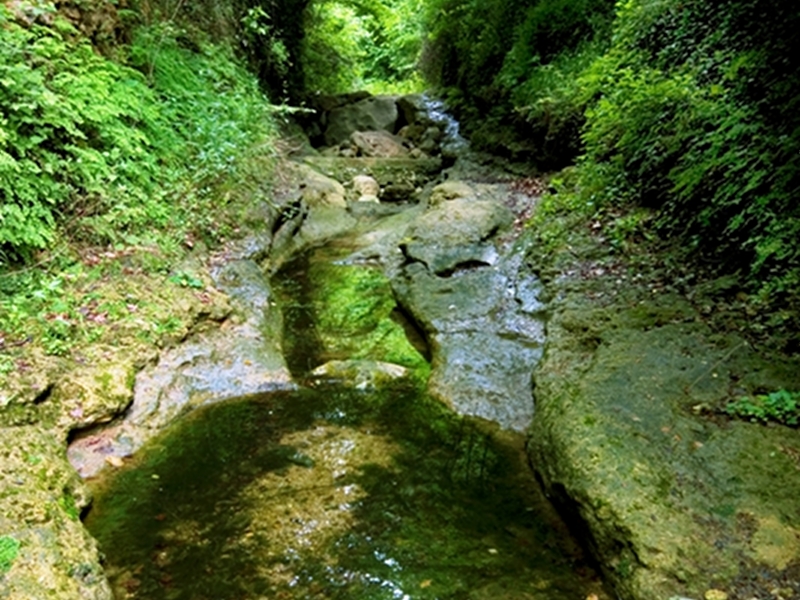Protected Area
Identity Card
- Land Surface Area: 4.00 ha
- Regions: Liguria
- Provinces: Savona
- Municipalities: Ceriale
- Establishment Measures: LR 9 27/02/1985 - LR 12 22/02/1995 - LR 32 21/04/95
- PA Official List: EUAP0277
- Park Authority: Comune di Ceriale
Rio Torsero Regional Nature Reserve
The little valley of Rio Torsero, situated next to the town of Ceriale, is very important from a paleontological point of view, since it houses a very rich fossil deposit dating back to the Pliocene period (from 5.2 to 1.8 million years ago), famous for the exceptional preservation conditions of the fossils and for the abundance and the variety of their specimens.
Rio Torsero dug its riverbed in the sedimentary rocks of "Ortovero Formation", highlighting the sedimentary strata containing the fossils. The latter include several mollusks belonging to the classes of the Bivalvia, Gastropoda, and Scaphopoda (over two hundred species). There are also corals, colonies of Bryozoa, fish otholits, rests of echinoderms and crustaceans, and interesting typologies of microfossils.
In order to protect the deposit, already studied since the early 19th century, Rio Torsero Regional Nature Reserve was established in 1985. A collection of fossils coming from the deposit of Rio Torsero is housed in the museum "Silvio Lai" in Peagna, a country hamlet of Ceriale, situated at a few hundred meters from the Nature Reserve.
Fossils, the Rests of Ancient Organisms
The identifiable rests of vegetal or animal organisms which lived in past geological periods are called fossils. They are mainly marine organisms whose rests are deposited at the bottom of the sea and remain incorporated in the sediments which accumulated meanwhile.
The series of the chemical-physical processes taking place after the inclusion of the organic rests in the sediment is called fossilization. During the fossilization, the organic substances are replaced by mineral ones which are more stable than the surrounding material. The form and the structure of the organic rests remained more or less unaltered, so that they could preserve themselves within the sedimentary rock for millions of years.
In general, only the hard parts of the organisms transform themselves into fossils: shells, inner skeletons, and the wooden parts of the plants. The tender parts rapidly deteriorate and usually do not preserve themselves. Sometimes also the hard parts disappear and only the outer mark in the rock remains.
Palenteology is the branch of science studying the fossils, obtaining from them essential data about the evolution of the animal and vegetal organisms during the geological periods and about the ancient environments in which the organisms lived.
Moreover, fossils enable geologists to establish chronological relations between the sedimentary rocks: as a matter of fact, the more recent rocky strata contain more evolved fossil species rather than the ones found in the most ancient strata.








